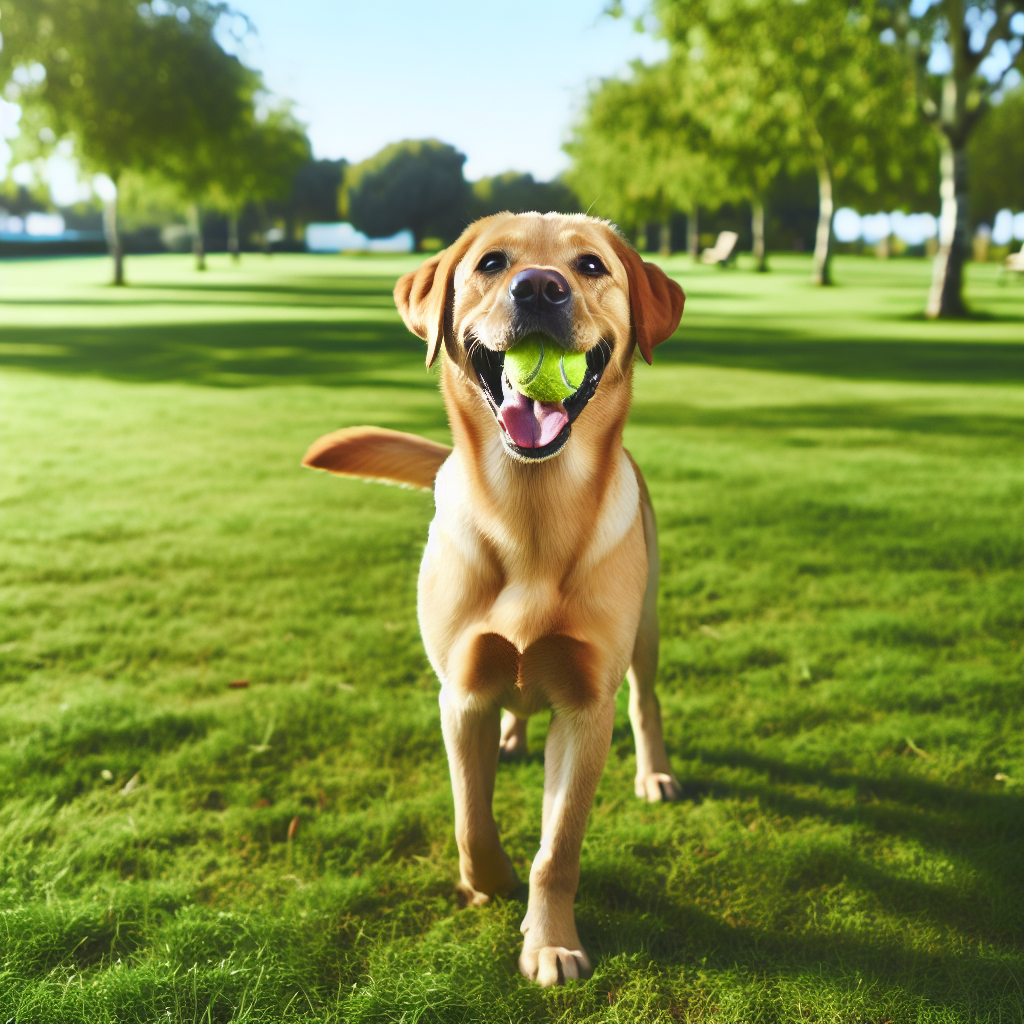The Flea Menace: A Fleeting Nightmare

Ah, fleas. If you’ve never had the pleasure, count yourself lucky. These little buggers can make your pet’s life—and yours—a real headache. I remember one summer when my dog, Charlie, brought home a few hitchhikers. Soon, it wasn’t just him scratching, but the whole family was on edge. I had to learn fast—what’s the best way to kill fleas? Turns out, it’s not as easy as one would hope.
Fleas are like that uninvited guest who refuses to leave. They reproduce at an alarming rate, making it feel like you’re living in a horror movie. You might wake up one morning, thinking the coast is clear, only to find your beloved pet scratching like there’s no tomorrow. Before you know it, you’re caught in a cycle of flea infestations. You try one thing, then another, and pretty soon you’re down the rabbit hole of endless flea control methods.
Vacuum Warfare: Your First Line of Defense
When I first discovered the flea issue, my first instinct was to clean. Enter the humble vacuum cleaner. I know it sounds too simple, but vacuuming for flea removal is a game-changer. It’s like taking a broom to a dusty porch after a storm—simple, but satisfying.
Every day, I’d vacuum with a vengeance. Carpets, pet beds, even the couch. And guess what? It worked. The vacuum sucks up not just the adult fleas but also the eggs and larvae. It’s like opening a secret passageway to a flea-free home. I’d say it’s the best way to kill fleas—effectively and without fuss.
The Power of Soap: A Simple Solution
Then there’s the flea-killing dish soap trick. I’ll admit, I was skeptical. It’s like hearing an old wives’ tale and rolling your eyes. But give it a try, and you might be surprised. Fill a shallow dish with warm water and add a few drops of dish soap. Place it near a nightlight. Fleas jump in and—poof—they’re gone. No expensive treatments, no side effects, just plain old soap and water.
I remember the first time I tried this. I set it up in the evening, and by morning, there were dozens of fleas floating in the dish. It’s a bit morbid, but there’s a certain satisfaction in seeing them gone. This simple solution gave me hope when I felt like I was losing the battle.
Natural Remedies: Fighting Fleas with Earth’s Gifts
Now, if you’re looking for a more natural flea remedy, there are options. I turned to Mother Nature’s pantry, trying everything from vinegar to essential oils. Some folks swear by these remedies, and they can be a nice alternative if you’re wary of chemicals.
One weekend, I brewed up a concoction of lemon spray—lemon slices boiled in water. Spraying it on surfaces turned out to be quite refreshing, though I can’t say it eradicated the problem completely. But it did make the house smell nice, and every little bit helps, right?
There’s also the diatomaceous earth method. Sprinkle it on carpets, let it sit, and vacuum it up. It’s like laying down a sandy trap for these pests. Just make sure you get the food-grade stuff, or you might end up with a dusty disaster.
Prescription Potions: Modern Solutions for Flea Control
When the natural remedies simply aren’t enough, it’s time to bring out the big guns—prescription flea treatments. I had to face the music and consult my vet. It’s not my first choice, but sometimes you need a sure-fire solution. These treatments can be effective, though they can hit the wallet.
I remember walking out of the vet’s office with a little bottle of flea drops for Charlie. I was hesitant, but within days the scratching stopped. It’s a relief, like finally finding that missing puzzle piece. These treatments are modern marvels, but they’re not magic. You still need to be diligent, following up with other home flea control methods to keep the beasties at bay.
Taking care of pets, battling fleas, it’s all part of the package. It can feel overwhelming, like you’re fighting an uphill battle. But with a little persistence, you’ll find what works for you. So here’s to you, reader—thanks for sticking with me through this flea-infested saga. May your home be itch-free, and your pets happier for it. Happy flea hunting!
Natural Remedies: Fighting Fleas with What Mother Nature Gave Us
Alright, let’s get down to brass tacks. Fleas—those tiny beasts that turn our beloved pets into scratching machines. It’s like they’ve got a vendetta against peace. But lucky for us, Mother Nature’s on our side. Imagine raiding her pantry for some natural flea remedies for dogs, and you come out with diatomaceous earth. It sounds fancy, but it’s just fine powder made from fossilized algae. Sprinkle it around your home, and those fleas will be checking out faster than a teenager at a family reunion.
And if you’re a fan of scents, grab some rosemary. Crush it up, sprinkle it on your pet’s coat, and voila—you’re practically a flea-fighting Gandalf, waving goodbye to those pests. It won’t cost you much either—just pennies, really. Plus, there’s something liberating about using the earth’s goodies to fight off these unwelcome guests. It’s like a secret club only you and Mother Nature know about.
Flea Traps and How to Make Them Work for You
Now, if you’re feeling a bit like a flea exterminator, DIY flea traps are your new best friend. Picture this: a shallow dish, some water, and a few drops of dish soap. It’s simple, cheap, and effective. You’re setting the stage for a flea drama—a sad tale where fleas meet their soapy demise. Place these traps around the house, especially in areas where your pet likes to hang out. It’s like setting a trap for the ultimate party crashers.
And if you’re feeling crafty, there are homemade flea trap ideas galore. A little light over the trap at night can lure them in like moths to a flame. They jump in, and the soap takes care of the rest. You’re not just fighting fleas; you’re staging a tiny battle in your living room. It’s oddly satisfying, knowing that you’ve turned your home into a flea graveyard—minus the headstones.
The Power of Prevention: Keeping Fleas at Bay Before They Invade
Here’s the thing, prevention is key. It’s like locking the door before they even knock. Flea prevention tips? Oh, I’ve got them. Regular vacuuming, washing your pet’s bedding, and a bit of yard work can keep these pests at bay. Who knew that chores could be your secret weapon in this battle? Plus, there are flea prevention products that can give you an edge. Use them before you spot the first flea, and you’re already winning.
But prevention isn’t just about products. It’s about routine. Keeping your home clean, your pet groomed, and their hangout spots tidy—these are the unsung heroes of flea prevention. It’s almost like you’re living in a flea fortress. And sure, it takes a bit of effort, but it’s worth it to avoid the chaos of a full-blown flea invasion.
Pet Hygiene: Bath Time and Beyond
Now, let’s talk about the real MVP of flea control—pet hygiene. Bath time isn’t just about suds and bubbles; it’s about turning your pet from a flea hotel into a flea-free zone. Fleas hate water, and they hate flea shampoo even more. So, how to bathe a pet to remove fleas? Start with warm water and a gentle flea shampoo. Work it into their fur, and watch those fleas run for the hills—or down the drain.
But don’t stop at baths. Regular grooming, brushing, and checking your pet’s fur can catch fleas before they set up shop. It’s a small act, but boy, does it make a difference. Your pet will thank you, trust me. And maybe, just maybe, you’ll finally get to enjoy that cup of tea without the scratching symphony in the background.
The Role of Your Veterinarian: When to Seek Professional Help
Sometimes, though, the battle gets a bit too intense. It’s like you’re fighting a losing war, and that’s when it’s time to call in the cavalry—your veterinarian. These folks are the superheroes of the pet world. So, when to see a vet for fleas? If your pet’s scratching like a DJ, or if you’re losing sleep over the flea circus in your home, it’s time to visit them.
They’ve got tricks up their sleeves, trust me. From prescription flea treatments to advice on flea prevention products that actually work, they’re your go-to when the going gets tough. It might cost you a bit, but think of it as an investment in your pet’s peace of mind—and yours.
Thanks for sticking with me through this flea-ridden adventure. You’re on your way to reclaiming your home and sanity. Here’s to a flea-free future! But hey, remember, you’re not alone in this. We’ve all been there, and together, we’ll send those fleas packing. Cheers to that!
Flea Control in Your Home: Simple Steps That Work
Ah, fleas—those tiny jumpers that turn your home into a circus. First rule of home flea control methods—clean like your life depends on it. I mean, grab that vacuum and go to town. Every nook and cranny. It’s your new cardio routine, and trust me, it beats the gym. Fleas love your carpet like a kid loves candy, so don’t skip it.
Next, wash everything. Your pet’s bed, the couch covers, and even that favorite throw blanket you curl up with. Hot water is your ally here. High heat sends fleas packing. Fleas thrive in the dark, damp spots of your home, so let the sunshine in. Open those curtains wide and let the light be your disinfectant.
And don’t forget, a flea-free home means you gotta keep the place tidy. Clear out the clutter. It’s like spring cleaning on steroids. Nobody said being a flea-fighting ninja would be easy, but hey, nothing worth having comes easy, right?
Natural Remedies You Can Try at Home
Ever tried essential oils? These little bottles of magic can be a game-changer. Lavender and cedarwood—your new best friends. Mix a few drops with water and spritz away. Your pet will smell like a day at the spa, and fleas will get their eviction notice.
For natural flea remedies for dogs, you might also want to try some good old-fashioned vinegar. Fleas hate the stuff. A little vinegar in your pet’s bathwater can go a long way. Not to mention, you’ll probably get a kick out of watching those fleas scatter.
And then there’s the classic lemon spray. Slice a lemon, boil it in water, let it steep overnight, and you’ve got yourself a flea repellent. Spritz it around your home, and watch those fleas run for the hills. You might even enjoy the fresh scent yourself.
Flea Prevention: Keeping the Little Buggers at Bay
Now, let’s talk prevention—because let’s face it, an ounce of prevention is worth a pound of cure. Regular grooming is your first line of defense. Brush your pet like it’s a daily ritual. Not only does it keep your pet looking sharp, but it also helps catch any unwanted guests before they settle in.
Flea collars are another tool in your arsenal. They’re like the “No Trespassing” signs for fleas. Slip one on your dog, and those pests will think twice.
And let’s not forget about your yard. A tidy yard is a flea-free yard. Mow the lawn, trim the bushes, and keep it clean. Fleas love tall grass and piles of leaves. Don’t give them a cozy hideout. Consider it a weekend project with long-term benefits.
Flea Treatments: What’s On the Market Now?
The market is flooded with flea treatment options. Pills, creams, shampoos—you name it. It’s a jungle out there. But don’t stress, you’ll find something that fits your needs and budget.
Effective flea control products are everywhere. Some are quick fixes, while others offer long-term solutions. Prices vary, so doing a flea treatment cost comparison is worth your time. Look at the labels, ask around, and read reviews. Knowledge is power, my friend.
And remember, no treatment is one-size-fits-all. Your pet is unique. What works for one might not work for another. It’s a bit like dating—you might have to kiss a few frogs before you find your prince. But don’t worry, you’ll get there.
Final Thoughts: A Flea-Free Future
So, here we are, at the end of our flea-killing journey. It’s been a ride, hasn’t it? But you’ve got this. You’re not just battling fleas—you’re reclaiming your home, your peace, your sanity.
With these flea-free home solutions, you’re well on your way to a future without the little pests. You’ve vacuumed, cleaned, spritzed, and even tried a little DIY. You’ve explored the market and found what works for you. So, what’s the best way to kill fleas? It’s a mix of determination, the right tools, and a dash of creativity.
Thanks for sticking with me. Here’s to a future where your dog can nap in peace and your home is your haven once more. You’ve earned it. Now go on, give those fleas the boot—and don’t look back. Cheers!
Quick Takeaways:
Alright, so you’re knee-deep in the flea fiasco and wondering what’s the best way to kill fleas. Here’s the scoop. First off, grab your vacuum and go to town. I mean, really go for it—every nook and cranny. It’s your ally in this battle, sucking up those pesky intruders. Think of it as a treasure hunt, only the treasure is your sanity.
Next up, let’s chat about natural flea remedies. You’ve got options like diatomaceous earth or essential oils. These are like nature’s own little flea-fighting ninjas. Sprinkle diatomaceous earth around your home or mix some lavender or cedarwood oil with water and spray it around. It’s cheap and chemical-free—what’s not to love?
For your furry friend, a bath with flea-killing dish soap can work wonders. It’s a simple yet effective method. Just lather them up and rinse thoroughly. You might have a wet, grumpy pet on your hands, but hey, no more fleas.
If you’re looking for something with a bit more firepower, prescription flea treatments are your go-to. These are like the heavy artillery, wiping out fleas quickly and keeping them at bay. Your vet can guide you on the best options.
Finally, prevention is key. Keep your home clean, maintain your yard, and maybe even try some DIY flea traps. Regular grooming and flea prevention products for your pet will also go a long way. Remember, an ounce of prevention is worth a pound of cure—or in this case, a flea-free home.
FAQs:
1. *What’s the best way to kill fleas on my pet?*
Bath time! Use flea-killing dish soap or a good flea shampoo. It’s a simple yet effective solution. Lather up your pet, rinse well, and make those fleas wish they never crashed your party. If the fleas persist, it might be time to chat with your vet about prescription flea treatments.
2. *How to kill fleas effectively in my house?*
Vacuuming for flea removal is your first step. Go over every inch of your home like you’re searching for gold. Then, sprinkle some diatomaceous earth around. It’s a natural flea remedy that’s both effective and budget-friendly. For added measure, try setting up some homemade flea trap ideas with water and dish soap.
3. *Are there natural flea remedies for dogs?*
You bet! Essential oils like lavender or cedarwood can help. Mix a few drops with water and spray on your dog’s coat. You can also use diatomaceous earth—just make sure it’s food-grade. These methods are gentle and less harsh than chemical treatments.
4. *When should I see a vet for fleas?*
If you’ve tried everything and your pet is still scratching like there’s no tomorrow, it’s time for a vet visit. They can offer prescription flea treatments that pack a punch. Plus, they’ll check for any skin issues or allergies that could be causing discomfort.
5. *What are some effective flea prevention tips?*
Regular grooming is key. Keep your pet’s fur clean and free of debris. Use flea prevention products like collars or spot-on treatments. Don’t forget about your home—vacuum often, wash pet bedding, and maintain your yard. A little effort now saves you a big headache later.
Conclusion:
So, what’s the best way to kill fleas? It starts with a bit of elbow grease and some strategic planning. Vacuum like you’re on a mission, sprinkle natural remedies, and keep your pet squeaky clean. If things get out of hand, your vet is your safety net. Remember, prevention is your best friend. Keep your home and pet tidy, and those fleas won’t stand a chance.
Thanks for sticking with me through this journey. You’re not alone in this flea battle, and you’ve got what it takes to win. Here’s to a future where your pet lounges in peace and you sip that cup of tea without a care in the world. Cheers to a flea-free life!
References:
1. https://www.healthline.com/health/healthy-home-guide/how-to-get-rid-of-fleas
2. https://www.webmd.com/pets/remove-fleas-from-pet
3. https://www.rover.com/community/question/7296/what-is-the-best-way-to-rid-your-dog-of-fleas/
4. https://www.reddit.com/r/pestcontrol/comments/oxt8ug/how_do_you_easily_get_rid_of_fleas/
Our solution eradicates fleas on contact without harmful chemicals, ensuring a safe environment for your pets and family. Easy to use and highly effective, SayByeBugs helps you maintain a flea-free home. Learn more and order today at SayByeBugs.com
Our solution eradicates fleas on contact without harmful chemicals, ensuring a safe environment for your pets and family. Easy to use and highly effective, SayByeBugs helps you maintain a flea-free home. Learn more and order today at SayByeBugs.com



